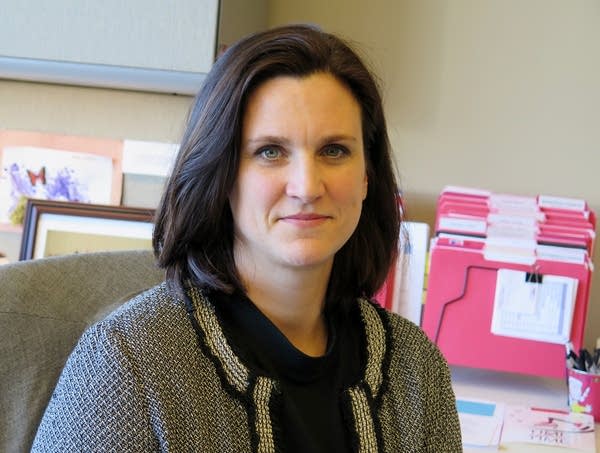DHS commissioner on fixing the bottlenecks in Minnesota's mental health care

Mental health facilities in Minnesota are facing a growing line of patients who require treatment, but don't have the beds to serve them.
This line is compounded by a priority admissions statute signed into law in 2013 which requires jail inmates to be transferred to a mental health institution within 48 hours of being committed by a state judge.
Department of Human Services Commissioner Emily Piper said that the state has 565 beds available in state psychiatric hospitals for patients with mental illness. However, the bed-to-patient ratio is not always 1-to-1.
"We sometimes have to take up several beds for one really acute patient, and so we can't always have our hospital up to the maximum capacity for beds, depending on the patient population," she said.
Create a More Connected Minnesota
MPR News is your trusted resource for the news you need. With your support, MPR News brings accessible, courageous journalism and authentic conversation to everyone - free of paywalls and barriers. Your gift makes a difference.
Piper said she thinks the shortage requires a more nuanced solution than adding more beds.
"You're looking at between $40 [million] to $50 million to staff a 110-bed hospital and about another $60 million to bond for it," she said. "So it's very expensive, and it also would take several years to get beds open for our hospitals."
Piper pointed out that there are bottlenecks throttling the system at the moment. One of them is keeping inmates and regular patients alike from getting the treatment they need, and another is keeping hospitals from discharging patients.
Piper said that the first bottleneck can be traced to two causes: an exponential increase in jail inmates requiring treatment and county authorities not delivering inmates to the hospitals within 48 hours.
"The first full year of [the statute's] implementation, we had about 111 patients that we admitted for treatment from jail," she said. "This year alone, in 2018, we've already admitted 152 patients."
Because of the statute, the DHS has had to set aside beds at the Anoka County Adult Mental Health Unit for jail inmates, resulting in longer waits for other patients.
The second bottleneck relates to the settlement of patients after they are released from mental health facilities.
Piper said that state facilities have to work with individual counties to find places with adequate support for discharged patients. According to her, it's not always an easy task.
"Once [patients] don't require hospital care anymore ... discharge placement to anywhere out of the hospital is a responsibility of the county," she said. "We've had issues with Hennepin County and other counties where they can't get people out once they're ready to be discharged from the hospital."
She added that in the Anoka hospital around 30 percent of patients who no longer require hospital care have nowhere to go until the county settles them.
"Part of the problem is that the people in our hospitals are just really hard to find community placements for. They're often times Level 3 sex offenders, they have criminal cases pending, they are hard people to move back into the community with appropriate support," she said.
Piper proposes that state and county agencies work closer together to ease the bottlenecks.
"So we need to work with the counties on making sure that we're getting people out as quickly as we can once they don't need to be there any longer," she said. "And we also need to, I think, work better with the sheriffs across the state in making sure that we're working together to get people into our hospitals."
In spite of this shortage, Piper remains hopeful in the state's mental health system, saying that many states in the country look to Minnesota for guidance and working examples of mental health care.
"Minnesota is really a national leader in the investments we've been making in mental health over the last several years," she said. "Although it feels like in Minnesota we have a long way to go, we really do have a lot of exciting innovation happening here that other states are looking towards us to lean on."